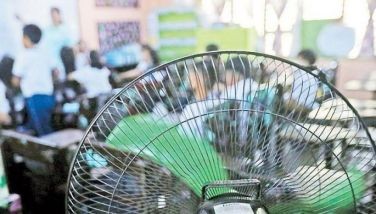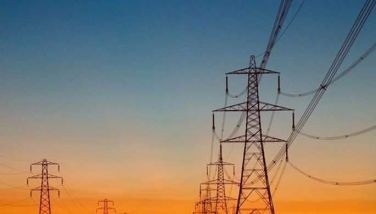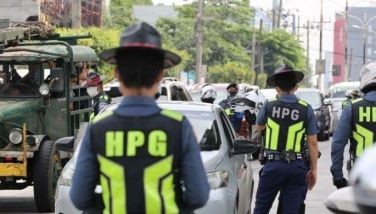Greenpeace: Air quality report highlights need for more air monitoring systems in Philippines

MANILA, Philippines — The good ranking of Philippine cities in the 2018 World Air Quality Report is not a cause for celebration, environmental group Greenpeace Philippines said, as it lamented the lack of air monitoring systems in the country.
Eleven of the cities in Southeast Asia with cleanest air are in the Philippines, according to the report of Switzerland-based IQ AirVisual and Greenpeace. The report measured the amount of fine particulate matter known as PM2.5 (µg/m³) in cities in 73 countries.
Calamba in Laguna topped the list of cleanest cities in Southeast Asia with 9.3 µg/m³, which is pursuant to the threshold of the World Health Organization at 10 µg/m³.
Valenzuela City (9.9 µg/m³) and Carmona City (10.9 µg/m³) ranked second and third, respectively.
“The good ranking of Philippine cities in the global report is not a cause for celebration as we have the least average number of monitoring stations per city in the region,” Khevin Yu, Greenpeace Philippines campaigner, said.
He added: “In fact the report highlights the urgent need for more comprehensive, governmental, real-time monitoring networks for the public to fully understand the state of quality in the Philippines.”
READ: 11 of 15 cities in Southeast Asia with cleanest air are in Philippines — report
The air quality data in the report is generated from ground-based monitoring stations that report PM2.5 concentrations.
Greenpeace Philippines explained that the study had to rely on the use of only one or two devices in the 16 cities highlighted, most of which are not located near coal-fired power plants. Coal plant emissions are major contributors to PM2.5 pollution.
According to the group, coal plant emissions could kill at least 2,400 Filipinos annually.
“The report therefore represents only a small fraction of the air pollution in the country. Given the previous alarming studies related to coal emissions, it is imperative to conduct more thorough and comprehensive research in cities near coal power plants and other sources of air pollution,” Yu said.
Seven of the 15 Southeast Asian cities on the list are in Metro Manila: Valenzuela City (9.9 µg/m³), Parañaque (12.2 µg/m³), Makati (13.7 µg/m³), Manila (14.3 µg/m³), Mandaluyong (14.5 µg/m³), Quezon (17.5 µg/m³) and Las Piñas (17.9 µg/m³).
Other Philippine cities that made it to the list were: Carmona (10.9 µg/m³), Davao (12.2 µg/m³) and Balanga (16.1 µg/m³).
Meycauayan (32.4 µg/m³) and Caloocan (31.4 µg/m³), on the other hand, were included on the list of most polluted cities in the region.
“Anyone in the country who has been in cities and main thoroughfares of Metro Manila and Calamba knows that we have air pollution problems,” Yu said.
He added: “As Greenpeace has done in Thailand, we are urging the Philippine government to improve our air pollution standards and put publicly accessible monitoring systems in place for further research and legislative support to reduce pollution globally.”
- Latest
- Trending






























